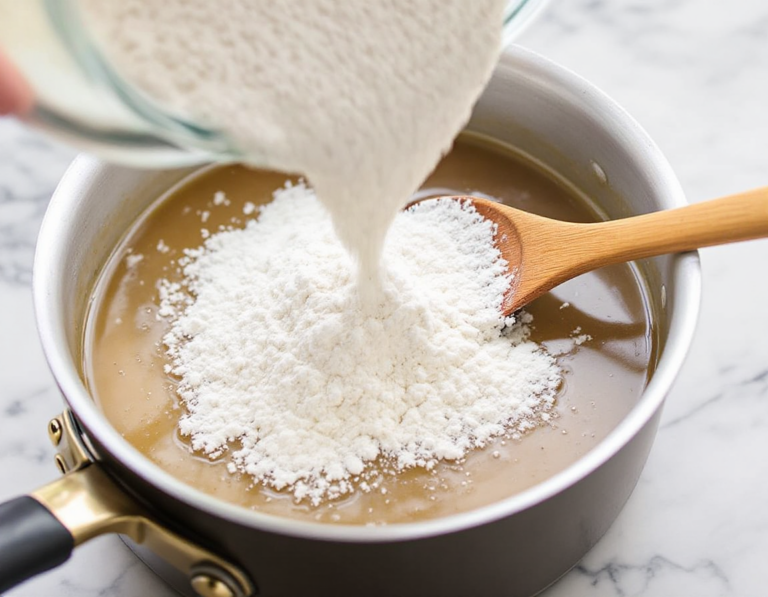Chicken gravy without drippings is like a magic trick in the kitchen—no roast, no problem! I stumbled upon this idea while reminiscing about my grandmother’s knack for turning pantry staples into culinary wonders. It’s almost like finding a hidden door to flavor town, where butter, broth, and a sprinkle of love come together to make a rich, velvety sauce that dances on your taste buds—perfect over mashed potatoes or even a sneaky late-night spoonful.
Steps
- Start by collecting the drippings from your roasted chicken and pour them into a saucepan.
- Gradually add flour to the drippings while stirring constantly, ensuring there are no lumps.
- Heat the mixture over medium heat until it forms a smooth paste, adjusting the consistency with more drippings if necessary.
- If the mixture becomes too thick, incorporate chicken broth or a bouillon base mixed with water to achieve a pourable consistency.
- Continue to cook the gravy, stirring regularly, until it reaches your desired thickness and flavor.
- Taste the gravy and adjust seasoning with salt and pepper as needed before serving.

Ingredients
- 2 to 3 tablespoons of chicken drippings
- 1 cup of additional chicken drippings or chicken broth
- 1 cup of water
- 2 tablespoons of flour
- 1 cup of prepared chicken broth (using Better Than Bouillon chicken base)
FAQ
- How can I prevent my chicken gravy from tasting like raw flour?
- To avoid a raw flour taste, ensure you cook the flour thoroughly before adding any liquid. Sauté the flour in the drippings until it’s golden brown to help develop a more robust flavor.
- What should I do if my gravy is too thick?
- If your gravy turns out too thick, gradually add more liquid, such as chicken broth or additional drippings, while continuously whisking until you reach the desired consistency.
- Can I use something other than drippings to make chicken gravy?
- Yes, if you don’t have drippings, you can use chicken broth or bouillon as a substitute. Mix it with water to create a flavorful base for your gravy.
- How can I store leftover chicken gravy?
- You can freeze leftover gravy in airtight containers or resealable plastic bags. This way, it’s ready to be reheated for future meals.
- How do I reheat frozen chicken gravy?
- To reheat frozen gravy, thaw it in the refrigerator overnight and then warm it on the stove over low heat, stirring occasionally to maintain a smooth consistency.
Tips
- Consider using more chicken drippings than flour to achieve a smoother consistency and avoid a paste-like texture.
- If the gravy becomes too thick, incorporate chicken stock or bouillon mixed with water to adjust the consistency without diluting the flavor.
- For enhanced flavor, ensure the flour is adequately cooked to remove any raw taste before adding liquids.
- Prepare a larger batch of gravy and freeze portions for convenient use with future meals.
Equipment
- Whisk – For mixing the ingredients smoothly.
- Saucepan – To cook the gravy.
- Measuring Cups and Spoons – To measure out ingredients accurately.
